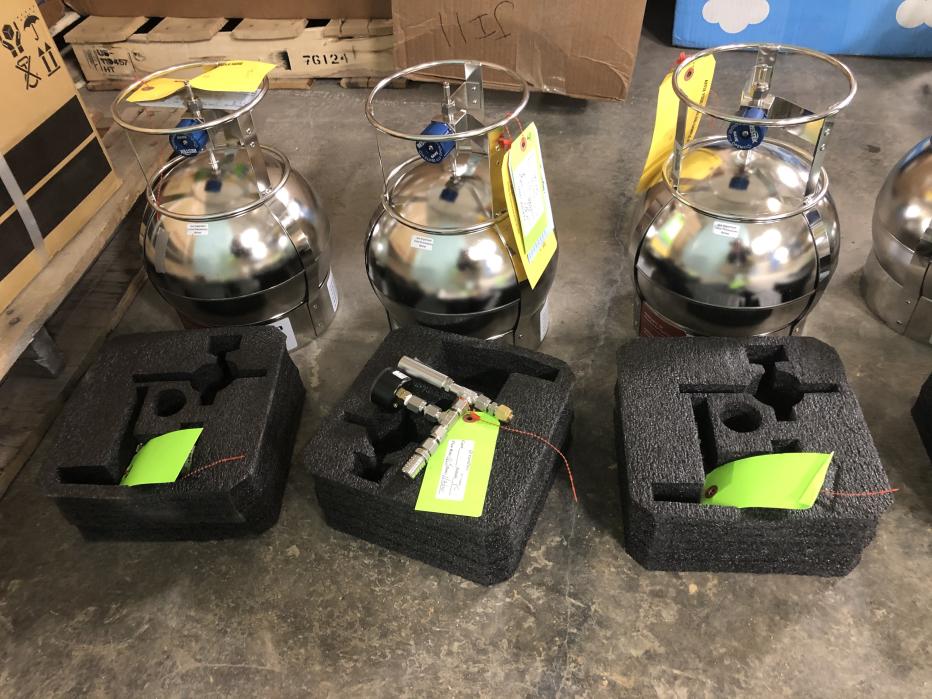
The U.S. Environmental Protection Agency (EPA) defines vapor intrusion (VI) as "a migration of vapor-forming chemicals from any subsurface source into an overlying building. ”The chemicals can be of different classes including volatile organic compounds (VOCs), such as trichloroethylene and benzene; select semi-volatile organic compounds, such as naphthalene; elemental mercury; some polychlorinated biphenyls and pesticides; and naturally occurring radon and hydrogen sulfide. Unabated, flammable vapors, for example the buildup of methane gas, may in extreme cases accumulate in buildings to levels that can cause explosions. In lower concentrations, noxious vapors may pose an unacceptable risk of chronic health effects due to long-term exposure.
VI processes are highly variable over time and vary spatially between buildings or even within one large building. Environmental scientists at Jacobs have recently published three peer-reviewed papers that improve the mathematical understanding of VI and the ability to manage it cost effectively.
Research Findings
Attenuation factors are commonly used to estimate indoor air concentrations of VOCs based on their concentrations beneath a building floor. Keri E. Hallberg, P.E. and co-workers published a paper in the Journal of the Air & Waste Management Association that demonstrates that the default attenuation factor, which is based on a 2012 EPA study focused on residential buildings, often overestimates the indoor air concentrations in nonresidential buildings (e.g., offices, warehouses) by more than ten times. This study, supported by the U.S. Navy, was based on an extensive database analysis of 76 buildings at Department of Defense installations nationwide.
Because indoor air sampling for analysis of VOCs is costly and the concentrations in indoor air fluctuate rapidly, scientists have sought inexpensive indicators or tracers that can be continuously monitored to predict VOC concentrations. A paper by Christopher C. Lutes, M.S. and co-workers in the journal Groundwater Monitoring & Remediation (GWMR) shows how cold or falling outdoor temperatures, increasing indoor radon concentrations, or rising cross-slab differential pressures can be used to predict when peak VOC concentrations will occur in indoor air. Temperature forecasts are of course widely available, and several effective indoor radon detectors costing less than $200 can be found on the market. Thus, this EPA-supported study of detailed data from five sites paves the way for more efficient VI sampling and long-term management strategies.
A third paper by Lutes and co-workers, also published in GWMR, takes a deep dive into the patterns in concentrations observed every six hours for a period of six months in a large industrial building. The paper uses statistical tools (time series and machine learning analysis) that show radon was the strongest predictor of VOC concentrations for this building. Radon is a useful tracer of VI because radon and VOC concentrations are influenced by many of the same meteorological factors, such as barometric pressure, temperature, and wind speed. Temperature and wind vary in repeating daily and seasonal patterns, which influence VI. This work was supported by the Navy Environmental Sustainability Development to Integration (NESDI) Program Project 554 and Jacobs.
Learn More
Copies of these papers can be provided upon request by the authors at https://www.jacobs.com/contact/vapor_intrusion.
Keri E. Hallberg, Laurent C. Levy, Rodrigo Gonzalez-Abraham, Christopher C. Lutes, Loren G. Lund, and Donna Caldwell. An Alternative Generic Subslab Soil Gas-to-Indoor Air Attenuation Factor for Application in Commercial, Industrial, and Other Nonresidential Settings. Journal of the Air & Waste Management Association, May 2021. https://doi.org/10.1080/10962247.2021.1930286
Chris Lutes, Chase Holton, Brian Schumacher, John Zimmerman, Andrew Kondash, and Robert Truesdale. Observation of Conditions Preceding Peak Indoor Air Volatile Organic Compound Concentrations in Vapor Intrusion Studies. Groundwater Monitoring & Remediation, 41(2):99-111, Spring 2021. https://doi.org/10.1111/gwmr.12452.
Chris Lutes, Charles Holbert, Aditya Tyagi, Keri Hallberg, Loren Lund, and Travis Lewis. Temporal Variability in an Industrial Building–Time Series and Machine Learning Analysis. Groundwater Monitoring & Remediation, 41(2):87-98, Spring 2021. https://doi.org/10.1111/gwmr.12453.












































